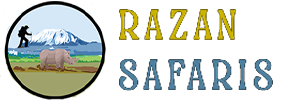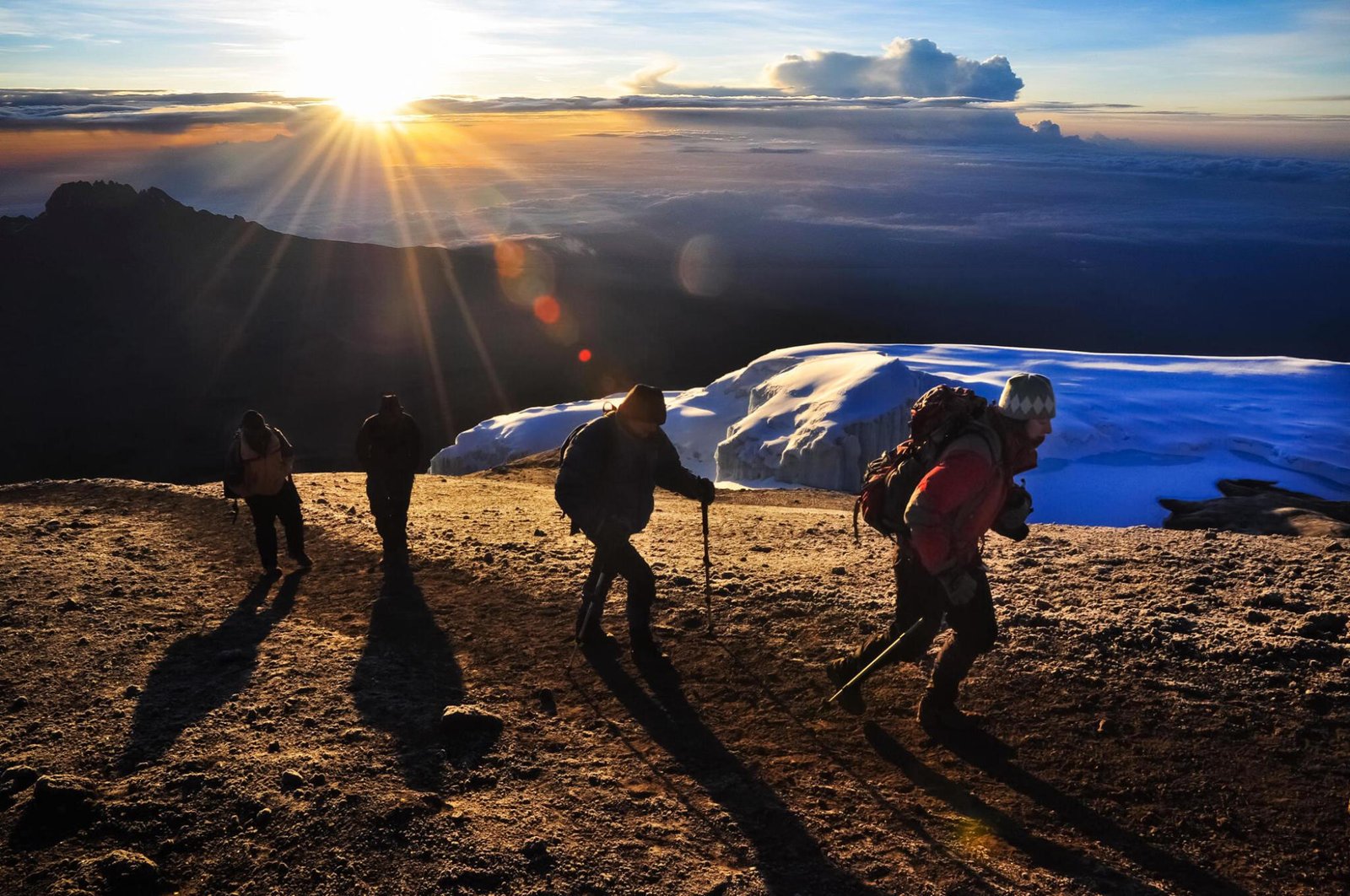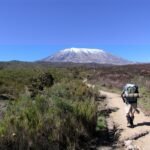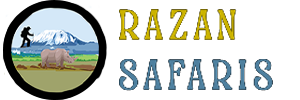A Kilimanjaro climb is a very special type of adventure, beyond a traditional vacation. Unlike popular beach vacations or simple hiking tours, climbing Mount Kilimanjaro requires certain preparations. After all, this adventure takes hikers to the highest point of Africa at 5,895 m/19,340 f. This is often the highest altitude many climbers to ever achieve, making this trip a true adventure of a lifetime. In this way, Kilimanjaro adventures are dangerous and unless the trekking party is staffed by the professional guides and equipped with proper equipment, the hikers are exposed to certain high altitude-related risks.
Please note, a set of proper gear is critical – you can’t climb Kilimanjaro in your usual hiking outfit.
Preparing for a Mount Kilimanjaro climbing adventure involves several key steps to ensure a safe and successful ascent.

Choose the right operator
As far as planning your trip is concerned, this is perhaps the most important part. Booking with Razan Safaris is infallibly the best way to ensure that you are booking with the right people. Every year we take over a thousand trekkers to the Roof of Africa. Our office and climbing base are right at the foothills of Kilimanjaro and we personally manage, control and supervise each and every departure. Some notable perks of booking with us are:
Local presence – we are a fully registered company operating from Kilimanjaro. We don’t subcontract our climbs. We organize each and every climb ourselves, so you can rest assured all the details will be professionally handled and any questions or concerns we will address directly – no third parties!
We are one of the few operators in the country to own two hotels, our own vehicles, and other facilities for running adventures. One of the hotels – Kilimanjaro White House Hotel – is the place where our Kilimanjaro climbing base is located. This makes it possible for us to keep control over each and every part of your trip.
We have proper gear and equipment from the North Face, Black Diamond, Red Fox, and other respected brands for mountain climbing. We are also one of the largest tourism employers in the country. There are over 1500 professionals (guides, porters, cooks, etc.) in our Kilimanjaro guiding crew.
Choose longer itineraries for your trip
You’ve probably read on the internet that Kilimanjaro itineraries vary from short 5-day treks to longer 7 and 8-day adventures. Some trips with Crater Camping may even take 10 days or more. It may be tempting to choose shorter Kilimanjaro trekking routes because, after all, don’t they all lead you to the peak of Africa? So what is the reason for paying more and spending more time on the slopes of Kilimanjaro?
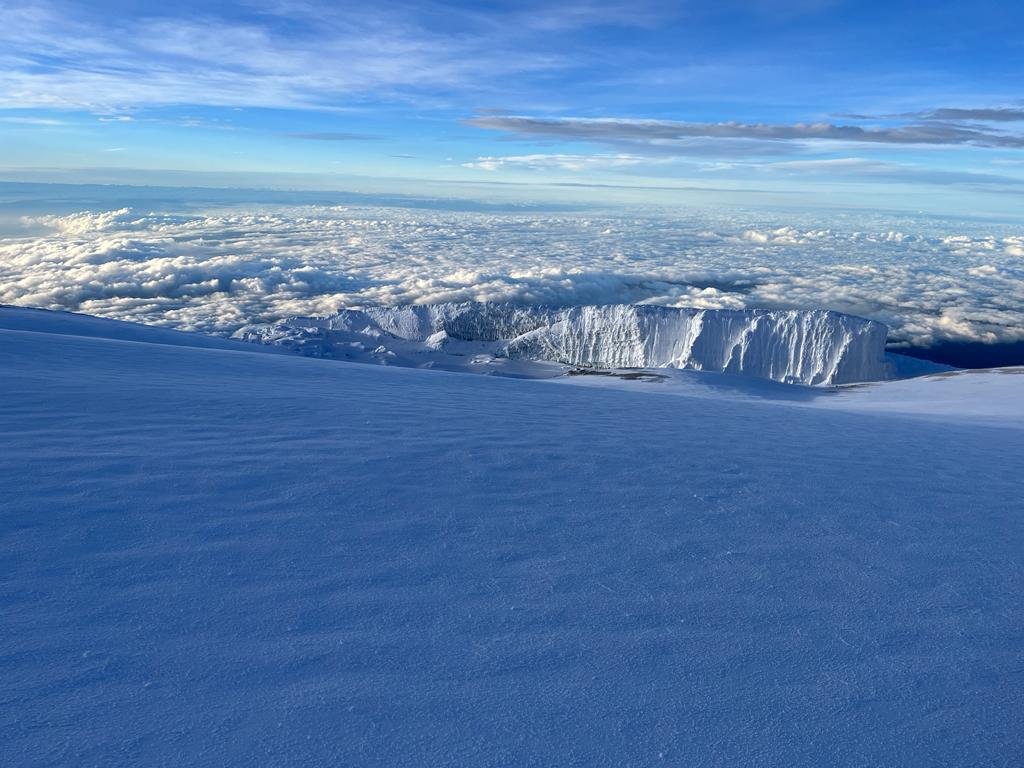
Well, there are two main reasons:
Better acclimatization. The higher you ascend on your trek, the lower oxygen saturation level in the air becomes. It happens because the atmospheric pressure drops and tiny molecules of oxygen become dispersed. Basically, every breath you take at higher altitudes results in less oxygen getting to your body. However, your body can adapt to this through more intense and deeper breathing, and faster transmission of oxygen through the body by red blood cells and other bodily transformations. However, your body needs time and energy for this transformation. That is why staying longer on the mountain is important. You may read more about acclimatization in this article.
It is also important to note that ‘rushing’ up Kilimanjaro, and not allowing sufficient time for acclimatization (your body’s adaptation to lower oxygen levels at higher altitudes) could result in altitude sickness and risk you needing to return to a lower altitude before successfully reaching the summit of Kilimanjaro.
Basically, a shorter itinerary decreases your chances of successfully climbing Kilimanjaro. You can read more about that in this article.
Better scenic experiences. When rushing forward to the next camp before sunset, one can easily skip the most picturesque areas of Kilimanjaro. It is certainly a bad idea – Kilimanjaro is one of the most beautiful places on the planet! Why not linger a little on Shira Plateau or Barranco Wall to enjoy a beautiful view and take stunning pictures? Or just make a little siesta with a cup of tea in the company of your friends right in the middle of a hike from one camp to another?
Climbing the highest mountain in Africa is a once-in-a-lifetime experience, rushing through it isn’t the best way to savour this amazing opportunity. Really, when you consider the investment of a Kilimanjaro climb, there is not much difference between a 6-day or 7-day trek, but the difference for your overall experience and adventure will certainly be noticeable. A longer version is much more rewarding, not to mention that it is safer. You will truly enjoy Kilimanjaro and most likely, won’t feel any discomfort.
Did we mention longer itineraries have higher success rates? Check out these 7-day Kilimanjaro itineraries that have the highest success rate of all.
Choose the right time for your adventure
Tanzania is an East African country that lies on the equator and Mount Kilimanjaro is just 205 miles from the equatorial line. Because of this, there are no traditional seasons here, but dry and rainy seasons instead.
The dry seasons are:
From late December to early March – because it is also the Christmas holidays period, this time is especially popular among tourists.
From early June till early October – though it is surprisingly cooler than in the “winter” dry season, the weather is sunny and the sky is clear.
The rainy seasons are:
From mid-March till late May is the “big” rainy season. It is called like this not because of the intensity, but because it lasts longer than the “small” one, which, in its turn, starts in late October and lasts till mid-December.
Although the majority of climbers prefer the dry season for their Kilimanjaro adventure, the rainy season has several distinct advantages. You may read about them and other interesting facts about seasons in Tanzania in our special article here.
ALSO REMEMBER: dry season does not necessarily mean that there are no rains at all – Kilimanjaro is a mountain, after all, and like all significant peaks, the weather may change at any moment. Having a rain poncho in your daypack at all times is essential. Similarly, the rainy season doesn’t mean that it is showering the whole day – normally, it starts drizzling at midday, and the rain grows stronger by evening. Sometimes, there may be no rains at all.
Thus, one shouldn’t expect a clean sky in January and rains in May as something inevitable – the weather will likely be like this, but it is not certain. Because of that, whatever date you chose for your adventure it is essential that you have a full set of Kilimanjaro gear for all types of weather.
Spend some time training for Kilimanjaro
One needs to hike an average of three to five miles every day through a rugged terrain on a Kilimanjaro climb. This requires good stamina, and a strong cardiovascular system. If you currently spend most of your time sitting in an office, there are several things you can do to get ready for your Kilimanjaro adventure:
Running and bike-riding are excellent exercises to prepare for Kilimanjaro. A 3-mile run or a 5-mile bike ride every other day is a good start. Swimming is also an excellent activity to strengthen your heart and blood vessels.
If you have a gym membership, running on a treadmill will be helpful. Also, performing some planks and squats will make your legs stronger and better prepared for long Kilimanjaro hikes.
While working out in the gym, it is important to focus more on aerobic and cardio activities than on muscle building. For Kilimanjaro, stamina is much more important than physical strength.
If you live close to the countryside, long (6-10 miles) hikes cross-country are the best way to get ready for the future mountain climb. This is something similar to what you will be doing on Mount Kilimanjaro. Focus on hills and steep inclines to prepare your body for the slopes of Kilimanjaro.
Also, if you bought new hiking boots for the Kilimanjaro tour, a cross-country hike is an excellent opportunity to break them in. Taking new, unused boots for a Kilimanjaro trip is certainly not a good idea. You are likely to get painful blisters and calluses with brand-new boots, and this could turn what originally seemed to be an exhilarating adventure into a torturous walk. If you ‘break in’ your new hiking boots through training exercises, they should be comfortable and ready in time for your Kilimanjaro climb.
We recommend to start exercising physically for Kilimanjaro 3-4 months before the start of your Kilimanjaro adventure. We also suggest that you take a break from doing workouts and walks the two weeks before you arrive in Tanzania so that your body can fully rest and re-energize before the Kilimanjaro climb.
We have a special article on our website for those who want to know more about a proper training plan for Kilimanjaro.
Pack the right gear
You will traverse several climatic zones as you make your way from the starting trailhead to Kilimanjaro’s summit. In fact, the Kilimanjaro trip is like a journey from the tropics to the Arctic over the course of seven days. The weather, vegetation and environment will change dramatically and a hiker should be ready for this.
Primarily, one needs to take proper clothes and footwear for this trip. The list includes hiking pants, a fleece jacket, membrane pants and jacket, storm pants and jacket, synthetic T-shirts, hiking boots and many other things.
Have a look at our detailed packing guide to understand what is required for this epic adventure.
At the core of proper Kilimanjaro outfitting is the idea of “layering”. This technique helps to keep your bodily temperature well-regulated, while providing good insulation ventilation. There are special types of layering for warm weather in lower camps, and for the colder conditions at the higher elevations. You will read more about this in detail in our guide.
Also, sometimes we see hikers in jeans and training sneakers attempting to climb Kilimanjaro. Either they weren’t instructed properly by their guides or decided to ignore the advice. Either way, hiking in jeans is always a very, very bad idea. Jeans should be left at home, together with everything made of cotton or other fabric with bad wicking for sweat.
Vaccinations for Kilimanjaro
A very popular question we get from tourists is whether there are any mandatory vaccinations for visiting Tanzania. In short, the answer is “no” – one does not need any specific vaccines to enter Tanzania. There is a small reservation though – people arriving from the countries with high risk of Yellow Fever transmission should have a certificate as proof of vaccination against this disease
The list of countries with high risk of yellow fever can be checked at the WHO website here.
At the same time, there are some vaccines which we recommend having, not because of a visit to Tanzania, but for travel in general. Sadly, certain diseases are still present and can be contracted everywhere, even well-developed countries of the western world are not an exception.
Recommended vaccinations are as follows:
Tetanus;
Hepatitis of A and B type;
Typhoid;
Poliomyelitis.
Prepare documents
You will need a passport valid for international travel to pass immigration and officially arrive in Tanzania. Make sure that your passport is at least six months valid from the day of your scheduled arrival date to Tanzania, and that it has at least two blank pages for visa and an entry stamp.
Our team will also require your passport information to process the entry permits to the National Park. Please be assured that all your personal and identity information is kept in strict confidentiality.
Kilimanjaro Diet
Proper nutrition is very important for a comfortable and safe Kilimanjaro adventure. Your body will need many additional calories for you to reach the peak of Kilimanjaro. Energy consumption on a Kilimanjaro hike is about double one’s usual amount and eating well is very important.
Here at Razan Safaris we’ve designed our special Kilimanjaro menu that is both tasty and energy-rich. Our mountain cooks have been trained by restaurant professionals and they will surprise you with a variety of meals offered every day in the dining tent. We normally serve beef, chicken, salads, vegetables, fruits, mushrooms, potatoes, beans, spaghetti and cheese, and other popular continental meals.
Halal, vegetarian, vegan and gluten-free meal plans are available at no extra charge.
Please let us know if you have any allergies or dietary restrictions before the start of your adventure. Our team will make sure that proper adjustments are made to the supply lists and that the cooks get properly instructed.
Book your tickets to Kilimanjaro International Airport
Tanzania is the largest East African nation, and has several international airports for arrivals from other countries.These are: Julius Nyerere International Airport in Dar es Salaam, Abeid Amani Karume International Airport in Zanzibar, and Kilimanjaro International Airport (JRO).
You need to pick the last in this list – Kilimanjaro International Airport (JRO). Mount Kilimanjaro National Park is just 80 km from this airport, and many hotels are conveniently located nearby. Flying directly here is a better option than taking a connection flight from Dar es Salaam or Zanzibar airports.
Once you book your flight, please let us know. We will arrange a comfortable transfer for you with one of our air-conditioned Toyota Alphards at any time your flight arrives, day or night.
Contact us with any questions!
If you have any further questions, please feel free to get in touch with our team. Our experts are always ready to help you with planning your adventure, not only are our team members passionate about Kilimanjaro adventures, each of them regularly climbs Mount Kilimanjaro and are able to provide you with accurate and timely travel advice.
